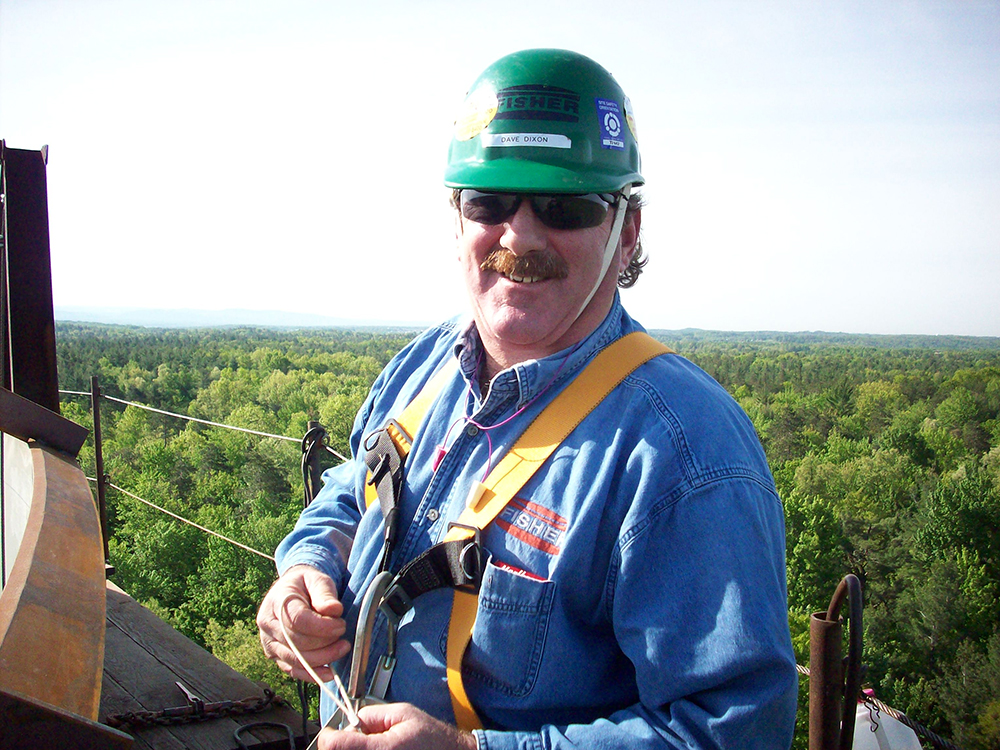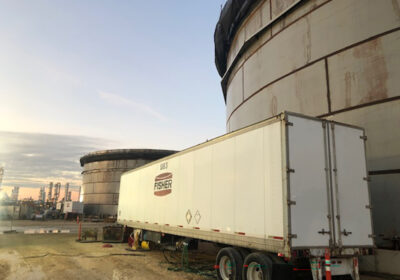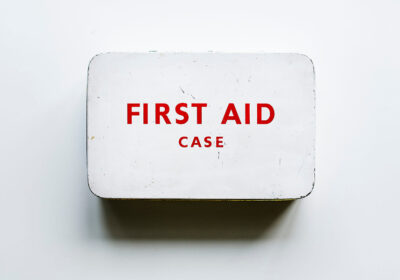3 SIGNS OF UV DAMAGE TO YOUR SYNTHETIC SLINGS

Charles “CJ” Hineman, Fisher Tank Company’s Safety Director, joins the Think Tank this week to share some potentially life-saving info about synthetic slings.
Coppertone Can’t Keep Synthetic Slings Safe
The idea of lathering up your synthetic slings with SPF 30 does sound a bit ridiculous, but UV degradation is a serious threat to the safety of anyone using synthetic slings while building a field erected tank, moving materials, or working on any construction job site. We all know that the sun emits harmful ultraviolet radiation — we can see or experience it every day, in painful sunburns, faded paint jobs and cracked dashboards.
Nylon and polyester slings are equally susceptible to the damaging effects of UV exposure. When synthetic material is overexposed to UV light it degrades it by breaking down the molecular bonds in the fiber structure, thus weakening the sling and making it potentially very dangerous.
Building huge storage tanks requires a lot of work high up off the ground and our teams rely on slings to help keep them safe, so maintaining slings in peak condition is vital.
At a recent I&I Sling rigging seminar I attended, the class reviewed test data illustrating just how bad UV can be on synthetic slings (both web and round slings). Testing conducted by WSTDA (Web Sling & Tie Down Association) revealed some scary stats:
- Up to a 30% loss in a polyester web sling within a 12 month period
- Up to a 60% loss in nylon web slings after 12-36 months
Keep in mind, these tests were conducted in a lab and were not in actual field application (where strength loss would have been greater). Now this may or may not be news to you, but none the less, I can guarantee that someone in your organization (if not you yourself) has seen a sling that has been in the sun too long, and said, “It’s not THAT bad.” It’s highly likely that it IS that bad, or worse.
How Do You Know When It’s Time To Remove A Sling From Service?
Much like any job site hazard, you have to be able to recognize and identify the hazard first before you can correct it. Here are a few indicators of UV degradation:
- Check the color of the sling. Fading is clear sign of UV degradation. If a sling’s original color was orange and now it’s pale peach, it’s time to take it out of service.
- Check the texture and feel of the sling. Stiffness, lack of pliability, or a fuzzy texture along the length of the sling can indicate severe UV degradation.
- Check the structural integrity (remember: UV light breaks down the fiber structure). If you snap or slap your synthetic sling against a hard surface and see a bunch of fiber dust, you know the sling is a victim of UV degradation, and should not be used.

UV Degradation – Don’t Overlook, Don’t Underestimate It
We’re training our welded steel tank construction crews, foreman, and site safety personnel to look for and recognize the signs of UV degradation, and we encourage you to do the same. Everyone on the job site must understand that if a sling shows any sign of UV degradation, it is “THAT bad,” and should be replaced.
For more information about UV degradation contact your rigging provider or visit OSHA.gov for additional guidance.
Stay safe!
Charles “CJ” Hineman, Safety Director
Click here to read more of our blogs




